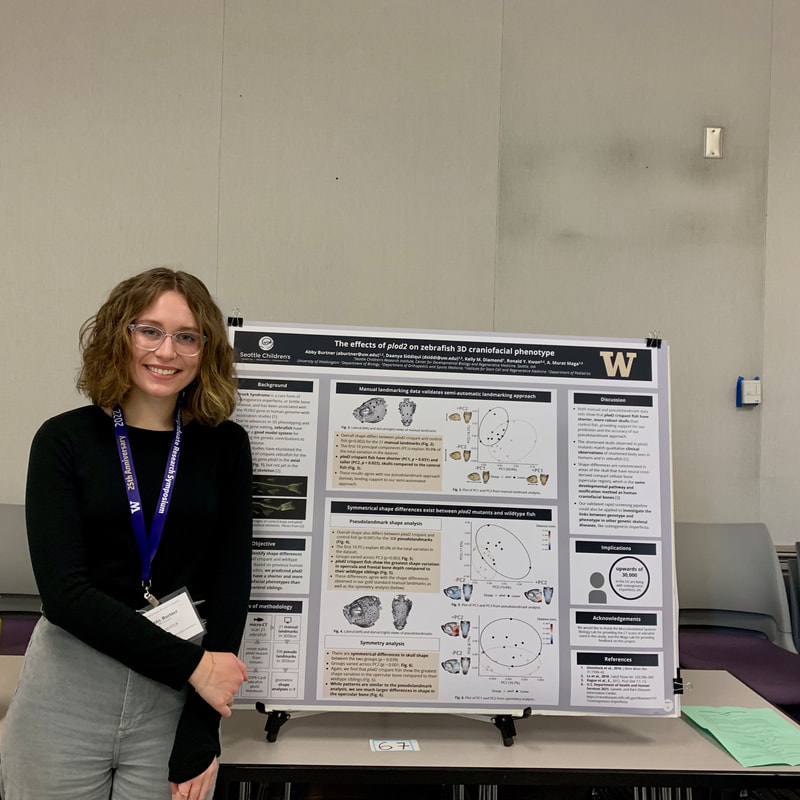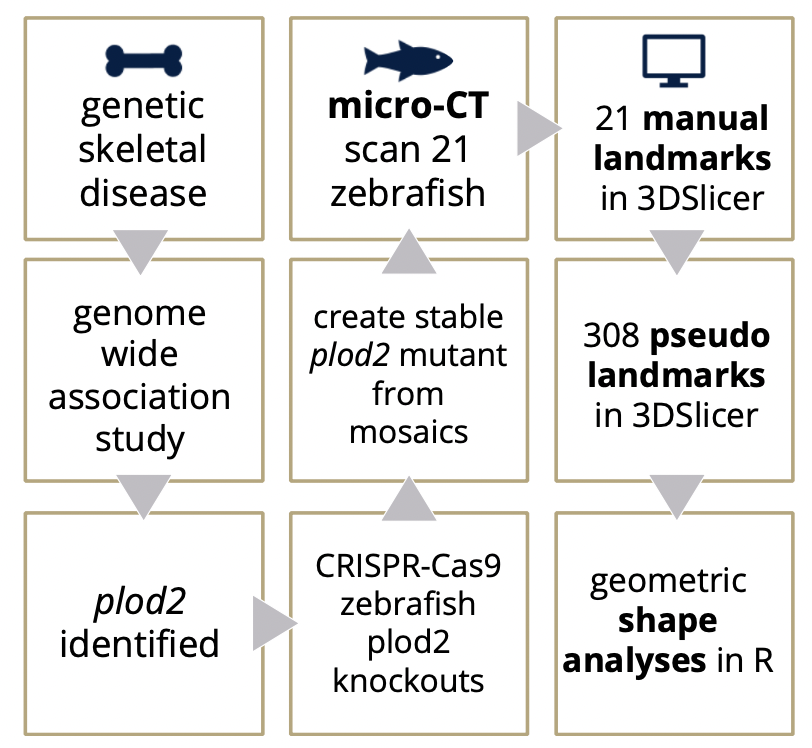From September 2021 to June 2022, I worked with Kelly Diamond and a few other undergraduates in the Maga Lab on a project aimed at quantifying 3D zebrafish craniofacial phenotypes.
Understanding the link between genotype and phenotype is a central goal of biology. With the prevalence of genome-editing technologies like CRISPR, we need a way to rapidly analyze the complex phenotypes that result, for example, in zebrafish skulls--a key model organism in the study of evolution, development, and human disease. This project uses computational biology techniques to provide a pipeline (below) to rapidly examine the 3D phenotypes of crispant and mutant adult zebrafish skulls.
I've helped collect data for this project using the open-source program 3D Slicer/SlicerMorph to place landmarks on micro-CT scans of zebrafish skulls. Specifically, I focused on the phenotypic effects of the gene plod2, implicated in the human skeletal disease Bruck's Syndrome. I had the opportunity to present my results at the UW Undergraduate Symposium in Spring 2022 (below) with my fellow undergraduate researcher Daanya Siddiqui. This undergraduate research experience has helped me realize that I really enjoy computational work, from software to programming, and I'm excited to apply the skills I've gained to future research projects.
Read the full article here:
Diamond KM, Burtner AE, Siddiqui D, Alvarado K, Leake SL, Rolfe S, Zhang C, Kwon RY, & Maga M. 2023. Examining craniofacial variation among crispant and mutant zebrafish models of human skeletal diseases. Journal of Anatomy, https://doi.org/10.1111/joa.13847.
Understanding the link between genotype and phenotype is a central goal of biology. With the prevalence of genome-editing technologies like CRISPR, we need a way to rapidly analyze the complex phenotypes that result, for example, in zebrafish skulls--a key model organism in the study of evolution, development, and human disease. This project uses computational biology techniques to provide a pipeline (below) to rapidly examine the 3D phenotypes of crispant and mutant adult zebrafish skulls.
I've helped collect data for this project using the open-source program 3D Slicer/SlicerMorph to place landmarks on micro-CT scans of zebrafish skulls. Specifically, I focused on the phenotypic effects of the gene plod2, implicated in the human skeletal disease Bruck's Syndrome. I had the opportunity to present my results at the UW Undergraduate Symposium in Spring 2022 (below) with my fellow undergraduate researcher Daanya Siddiqui. This undergraduate research experience has helped me realize that I really enjoy computational work, from software to programming, and I'm excited to apply the skills I've gained to future research projects.
Read the full article here:
Diamond KM, Burtner AE, Siddiqui D, Alvarado K, Leake SL, Rolfe S, Zhang C, Kwon RY, & Maga M. 2023. Examining craniofacial variation among crispant and mutant zebrafish models of human skeletal diseases. Journal of Anatomy, https://doi.org/10.1111/joa.13847.


